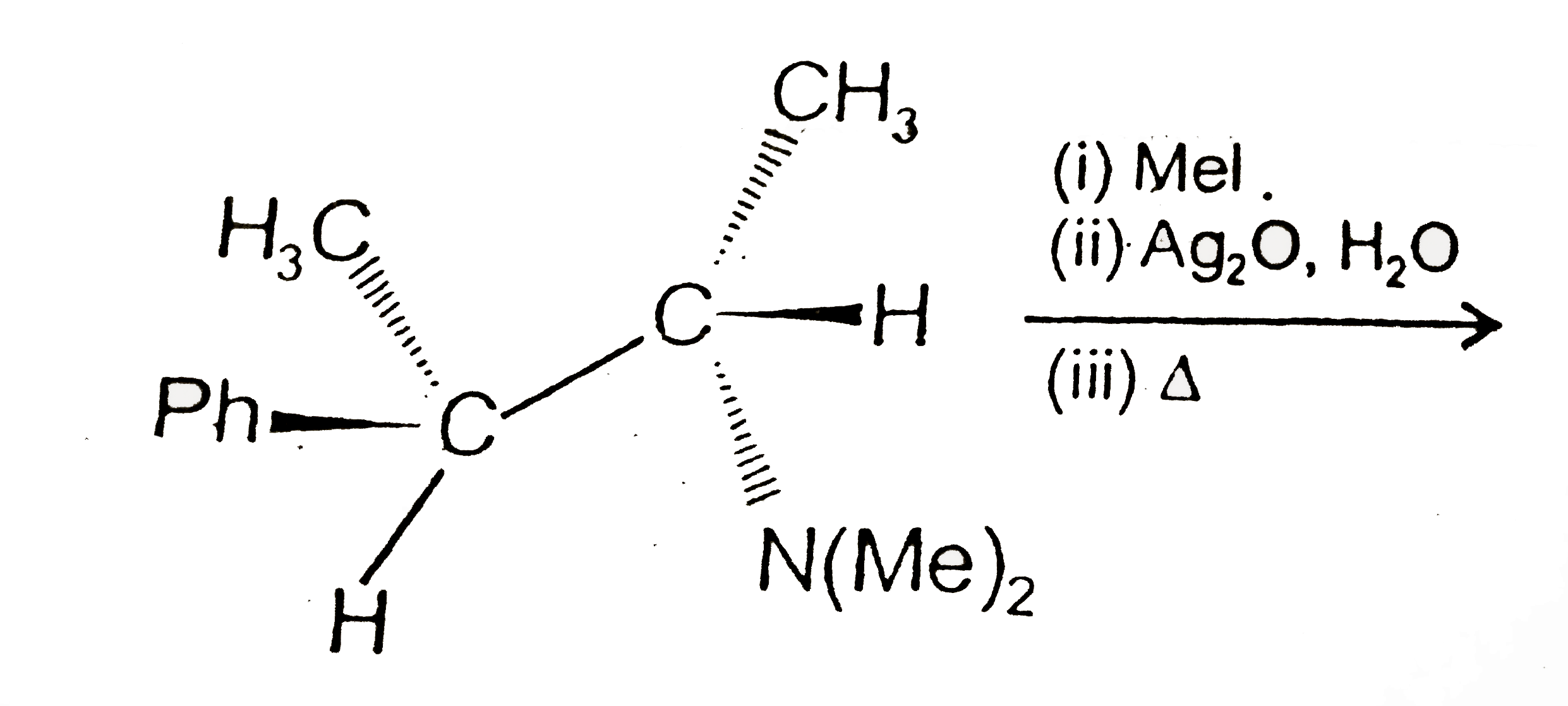The major product obtained from E2– elimination of 3-bromo-2-fluoropentane is :
CH3CH2CH=C−F
CH3CH2−Br∣CH−CH=CH2
CH3−CH2−C=C−CH3
CH3−CH=CH−F∣CH−CH3
To solve the problem of finding the major product obtained from the E2 elimination of 3-bromo-2-fluoropentane, we can follow these steps:
Step 1: Draw the Structure of 3-bromo-2-fluoropentane
First, we need to write the structure of the given compound, 3-bromo-2-fluoropentane.
- The pentane chain consists of 5 carbon atoms.
- The bromine (Br) is attached to the third carbon, and the fluorine (F) is attached to the second carbon.
The structure can be represented as:
CH3−CH(F)−C(Br)−CH2−CH3
Step 2: Identify the Leaving Groups
In an E2 elimination reaction, we need to identify the leaving groups. The two potential leaving groups here are bromine (Br) and fluorine (F).
Step 3: Determine the Stability of the Leaving Groups
Next, we need to evaluate which leaving group is better. The stability of the leaving group is crucial in determining the major product.
- Bromine (Br) is a better leaving group than fluorine (F) because bromine is larger and can stabilize the negative charge better than fluorine.
Step 4: Identify the β-Hydrogens
Now, we need to identify the β-hydrogens that can be abstracted by the base during the elimination reaction.
- The β-hydrogens are those attached to the carbons adjacent to the carbon bearing the leaving group (bromine).
- In this case, the β-hydrogens are on the second carbon (attached to F) and the fourth carbon.
Step 5: Determine the More Acidic Hydrogen
Among the β-hydrogens, we need to determine which one is more acidic. The presence of the electron-withdrawing fluorine group increases the acidity of the hydrogen on the carbon adjacent to it.
- The hydrogen on the fourth carbon (CH2) is less acidic compared to the hydrogen on the second carbon (CH) because of the electron-withdrawing effect of fluorine.
Step 6: Perform the E2 Elimination
The base will abstract the more acidic β-hydrogen (from the second carbon), and the double bond will form between the second and third carbons, resulting in the elimination of bromine.
The reaction can be summarized as:
Base|t|ractsHomCH(F)→doub≤bondformsbetweenC2andC3→Br≤aves
Step 7: Write the Major Product
The major product formed will be:
CH3−CH=CH−CH2−CH3
This can also be represented as:
CH3−CH=CH−CH2−F
This structure indicates that the double bond is between the second and third carbon atoms, with fluorine remaining on the second carbon.
Conclusion
The major product obtained from the E2 elimination of 3-bromo-2-fluoropentane is:
CH3−CH=CH−CH2−F
First, we need to write the structure of the given compound, 3-bromo-2-fluoropentane.
- The bromine (Br) is attached to the third carbon, and the fluorine (F) is attached to the second carbon.
CH3−CH(F)−C(Br)−CH2−CH3
In an E2 elimination reaction, we need to identify the leaving groups. The two potential leaving groups here are bromine (Br) and fluorine (F).
Next, we need to evaluate which leaving group is better. The stability of the leaving group is crucial in determining the major product.
Now, we need to identify the β-hydrogens that can be abstracted by the base during the elimination reaction.
- In this case, the β-hydrogens are on the second carbon (attached to F) and the fourth carbon.
Among the β-hydrogens, we need to determine which one is more acidic. The presence of the electron-withdrawing fluorine group increases the acidity of the hydrogen on the carbon adjacent to it.
The base will abstract the more acidic β-hydrogen (from the second carbon), and the double bond will form between the second and third carbons, resulting in the elimination of bromine.
Base|t|ractsHomCH(F)→doub≤bondformsbetweenC2andC3→Br≤aves
The major product formed will be:
CH3−CH=CH−CH2−CH3
This can also be represented as:
CH3−CH=CH−CH2−F
This structure indicates that the double bond is between the second and third carbon atoms, with fluorine remaining on the second carbon.
The major product obtained from the E2 elimination of 3-bromo-2-fluoropentane is:
CH3−CH=CH−CH2−F
Topper's Solved these Questions
Similar Questions
Knowledge Check
 . The major product obtained is A
. The major product obtained is A B
B C
C D
D
The major product obtained in the reaction
 A
A B
B C
C D
D
The major product obtained in the following
 A
A B
B C
C D
D
The major product obtained in the reaction is

View SolutionThe major product obtained in the reaction :

View SolutionThe major product obtained in the reaction :

View SolutionThe major product obtainned in the reaction

View SolutionThe major product obtained in the following reaction is

View Solution


